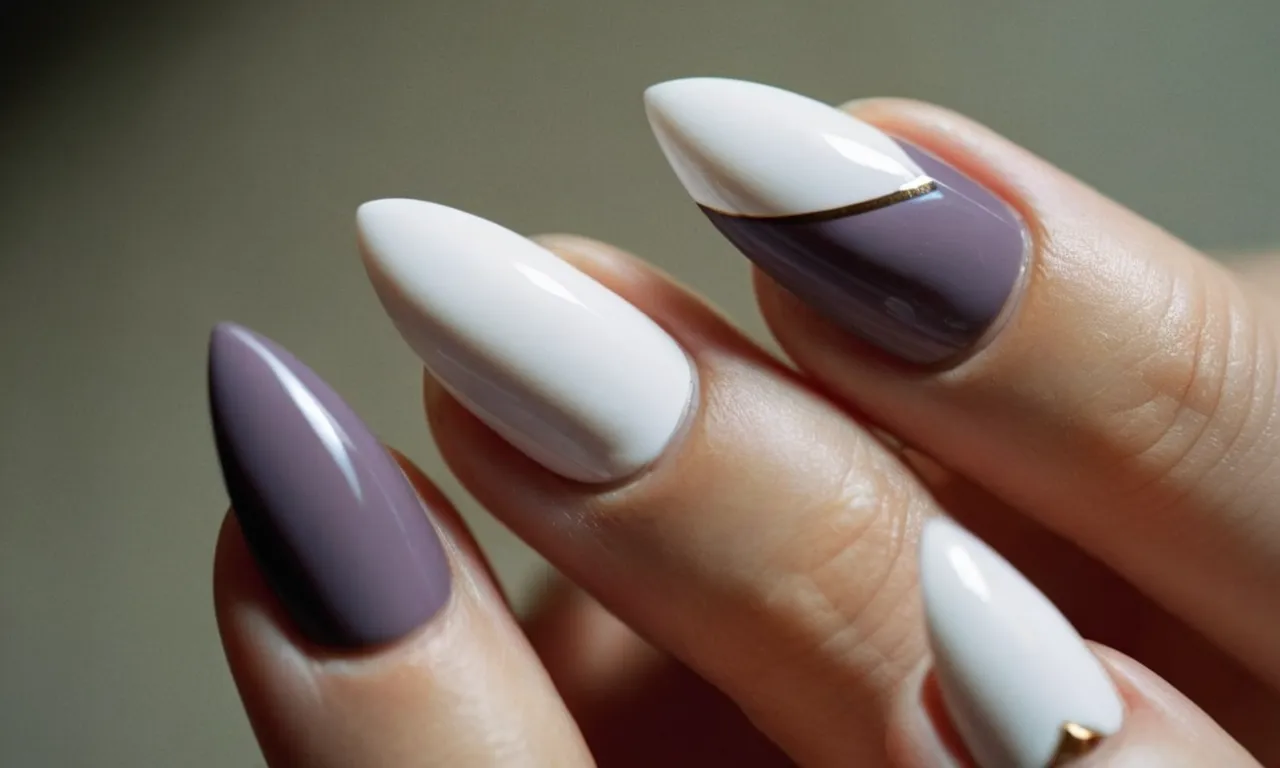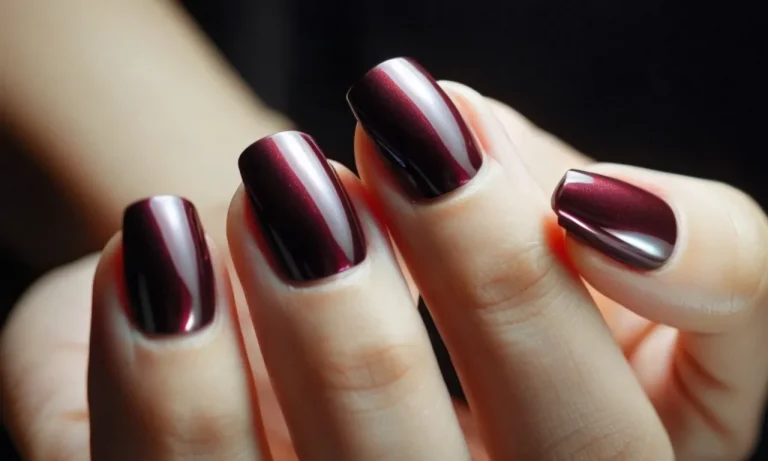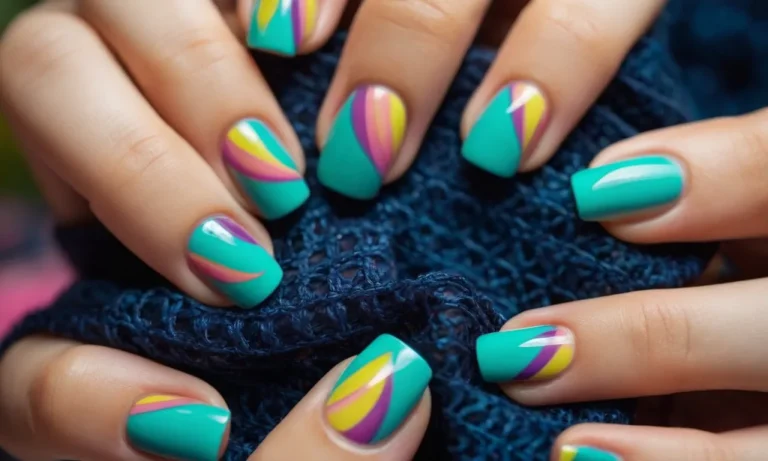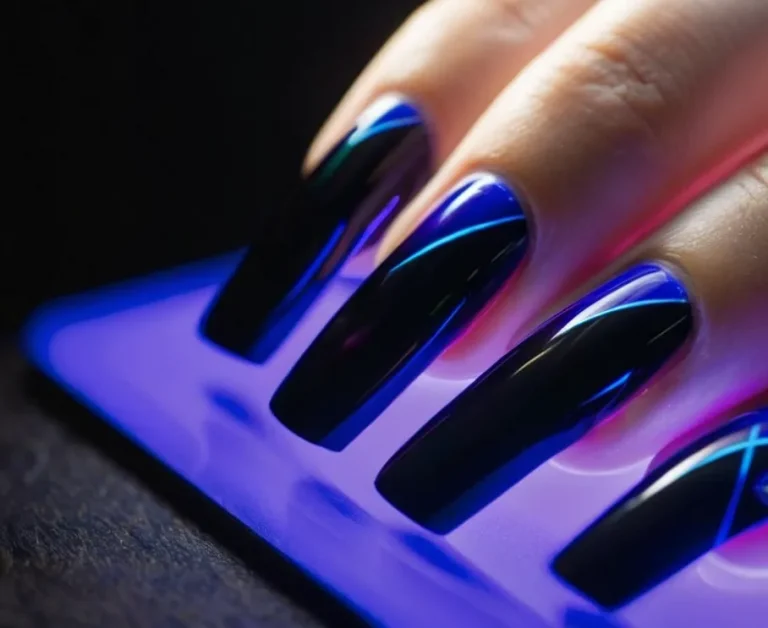How Long Does Super Glue Last On Nails?
If you’ve ever had a broken nail or nail enhancement and reached for the super glue as an emergency repair, you may have wondered – just how long will this last? Super glue forms extremely strong bonds in seconds, but when applied to fingernails it typically only has temporary sticking power.
If you’re short on time, here’s a quick answer to your question: Super glue lasts 1-5 days on natural nails and can last around 2 weeks on artificial enhancements before needing reapplication or repair.
In this comprehensive article, we’ll cover how the ingredients of super glue work, how to get the longest-lasting super glue nail bonds, factors that impact longevity, removal processes, alternatives, and tips for safe usage when wielding this mighty adhesive on your manicure emergency repairs.
How Does Super Glue Work on Nails?
Cyanoacrylate Chemistry
Super glue, also known as cyanoacrylate adhesive, works incredibly fast and strong on nails thanks to its unique chemical makeup. The main ingredient in super glue is cyanoacrylate, which is an acrylic resin that rapidly polymerizes and forms strong bonds when it comes in contact with a weak base like the nails.
This reaction happens very quickly, in just a few seconds, and produces long chains of acrylate molecules that cling tightly to the nail surface.
Rapid Polymerization
When cyanoacrylate in the super glue is exposed to trace amounts of water or hydroxide ions on the nail surface, it causes the cyanoacrylate molecules to link together in a process called rapid polymerization.
This instantly creates durable polymer chains that act like a plastic resin to bond the super glue tightly to the nail. It only takes about 5-30 seconds for super glue to fully cure and reach maximum strength on the nails.
Temporary vs Permanent Bonds
The bonds formed by super glue on nails are very strong but are not necessarily permanent. Super glue forms temporary yet durable bonds that can last for several days or weeks on the nails before breaking down.
For longer-lasting nail bonds, nail professionals recommend using professional-grade cyanoacrylate adhesives formulated for salon use rather than ordinary super glues. These salon-quality glues create more permanent bonds that can last for months on natural or artificial nails with proper application.
In general, super glue can be a quick and effective temporary solution for minor nail repairs, but works best when used in combination with other products like nail primers. Always ensure the nails are clean and dry before attempting to glue on any tips or acrylics with super glue.
With careful use, super glue can hold strong for toenail and fingernail fixes that need to last 2-3 weeks.
What Factors Impact Super Glue Longevity on Nails?
Nail Surface
The surface of the natural nail is one of the biggest factors impacting how long super glue will last. Natural nails have tiny ridges and grooves that allow the super glue to grip and adhere strongly. However, if the natural nail surface is too smooth or has been buffed, the super glue will not grip as well and may pop off sooner.
Using a nail file to gently roughen the surface first can help the super glue bind better. Artificial nails like acrylics or dip powders tend to be too slick for super glue to properly adhere.
Application Technique
Proper application of the super glue is critical for longevity on the nails. The nail tip should be thoroughly cleaned and dried first before applying a thin layer of super glue with the applicator brush. Letting it set without disturbing for 30-60 seconds allows it to fully cure.
Applying too much super glue in thick globs can actually weaken the bond and cause it to lift off the nail faster. Gently pressing down on the object after applying also helps. Avoid getting super glue on the skin or cuticles.
Exposure to Water and Soaps
Frequent exposure to water is the enemy of super glue bonds on nails. The polymers in super glues are vulnerable to hydrolysis, which is a chemical breakdown reaction with water over time. Frequent hand washing, showering, swimming or bathing can accelerate hydrolysis and cause super glued items to fall off nails earlier than expected.
Using gloves during wet tasks can help prolong the bond. Greasy moisturizers and soaps can also interfere with super glue adhesion.
Nail Growth
As nails grow out naturally from the matrix under the cuticle, the super glued item does not grow with it. This essentially pulls the bond apart little by little as the nail lengthens, causing the super glued decor to eventually pop off further down on the nail.
Those with faster growing nails may see super glue adhere for a shorter time than those with slower growth. Frequent nail trimming can help prolong a super glue manicure.
Impact and Wear
Super glue is designed to create strong bonds, but it is not indestructible. Impact, friction and general wear and tear during daily activities can weaken the super glue over time and cause it to fail.
Activities like typing, exercising, cleaning and more put subtle stress on the bond that takes its toll. Keeping the hands protected during rougher tasks can help the super glue last longer before wear causes it to give out.
Tips for Making Super Glue Nail Bonds Last
Prep The Nail
Properly preparing the nail is crucial for creating a long-lasting super glue nail bond. Start by gently filing the surface of the natural nail to remove any oil or residue. Use a nail dehydrator or rubbing alcohol to remove all moisture and oils from the nail plate.
This helps the super glue adhere better. Gently buff the nail surface as well to create microscopic ridges for the glue to grab onto. Avoid over-filing or buffing too aggressively, as this can damage the nail bed. Prepping the nail is the most important step for a durable super glue manicure.
Controlled Application
Applying just the right amount of super glue is key. Too much glue will make a mess and too little won’t create a strong bond. Apply a very thin layer of super glue to just the surface of the natural nail, avoiding contact with the surrounding skin.
Let the glue become slightly tacky for about 10-15 seconds before adhering the artificial nail. This helps prevent oozing. Carefully press the artificial nail in place, holding for 30 seconds. Resist the urge to keep pressing or moving the nail around.
A light, steady touch prevents bubbles in the bond line.
Allow Full Curing
It’s crucial to let the super glue bond fully cure before exposing the nails to water or wear and tear. Full curing can take up to 24 hours. Avoid wetting the nails and be gentle with use of the hands during this time.
Even if the bond feels dry and hard to the touch in minutes, the inner layers need adequate time to reach maximum strength. Have patience and let those super glue nails cure! Even an extra few hours makes a difference in how long the manicure lasts.
Limit Exposure to Water
Super glue bonds can weaken when exposed to excessive moisture over time. While occasional minor handwashing won’t instantly ruin the manicure, prolonged soaking is problematic. Wear gloves for dishes, cleaning and gardening. Avoid long baths or swimming.
When possible, bathe before applying super glue nails to maximize wear time. The less exposure to water, the longer a super glue manicure will last. Quick rinses are fine, but limit total time submerged.
File for Smoothness
Gently filing the surface of the nail every few days helps smooth away small cracks before they can expand and cause lifting or peeling. Use a fine grit nail file to buff away roughness, shaping the free edge as needed. Don’t file too aggressively or you may thin out sections of the bond line.
Filing also removes some of the oil that naturally occurs on nail surfaces from our hands. Keeping super glue nails smooth and matte allows for maximum wear.
Reapply When Needed
Check closely for any lifting or cracking around the nail edges as your manicure grows out. At the first sign of bond failure, don’t delay repairs. Use a thin layer of fresh super glue just at the problem spots to re-adhere the lifting edge.
A quick re-bonding touchup can often extend the wear of a super glue manicure by weeks. With careful re-gluing at just the right times, a super glue manicure can potentially last over a month with care. Pay attention and reapply as needed.
How to Remove Super Glue from Nails
Acetone Soak
Soaking the nails in pure acetone is one of the most effective ways to remove super glue. Acetone breaks down the cyanoacrylate in super glue, allowing it to detach from the nails. Start by filing the nails to remove excess glue and thin out thick layers.
Then, soak cotton balls in acetone and place them over the glued nails. Wrap each finger in foil and let it sit for 10-15 minutes. The glue should soften enough to gently scrape away with a wooden stick or orange stick. Repeat as needed until all traces are gone.
Acetone can dry out the nails, so apply cuticle oil after to replenish moisture.
Buffing
For small amounts of glue, gently buffing can remove super glue from nails. Use a fine grit nail file or buffer to lightly smooth over the glued area. Apply a dropping pressure and buff in one direction – not back and forth. The friction helps slough off the top layer of glue.
Be careful not to over-file or you may thin out the nail plate. Buffing works best on minor glue spills toward nail tips. It likely won’t eliminate glue adhered deep down on the nails.
Rubbing Alcohol
Rubbing alcohol can be used to break down cyanoacrylate glue. Its solvent properties help detach super glue from the nail surface when applied. Dip a cotton swab in rubbing alcohol and gently scrub over glued nails.
Allow it to penetrate for a minute before peeling or scraping away the softened glue with an orange stick. Be patient and repeat the process until all visible residue is gone. Rubbing alcohol may dry out nails less than acetone.
But, it may require more applications and scrubbing to fully eliminate super glue.
Dental Floss
Using dental floss is a practical home method to remove dried super glue from nails. Simply slide floss under the nail glue and saw it back and forth. The friction and pressure can help lift off glue as you work the floss down the nail. This takes some elbow grease but avoids using chemicals.
Apply a drop of oil after to condition the nails. Be aware that shredding glue with floss may leave nails feeling a little rough. Use a buffer after to smooth them out.
Super Glue Nail Bond Alternatives
Cyanoacrylate Alternatives
If you want an alternative to super glue that provides a similar instant bond, cyanoacrylate adhesives are a great option. There are specialty cyanoacrylate glues formulated for use on nails that provide a long-lasting, durable bond.
Popular brands like Kiss and Revlon make nail glue alternatives to super glue that dry quickly and can last 1-2 weeks on natural nails. Some benefits of cyanoacrylate nail glues are that they are easy to apply, quickly form a tight bond, and many are formulated to be less brittle than standard super glues.
Just make sure to choose one designed specifically for nail use.
UV Gel Resins
UV gel resin nail polishes have grown in popularity in recent years as a durable, long-lasting nail enhancement. UV gels come in various colors and finishes and are applied to the nails before being cured under a UV or LED lamp.
This causes the gel to harden and adhere to the nail plate to form a protective layer that can last 2-4 weeks with proper application and care. Gel manicures are commonly offered in salons but gel polish kits are also available for at-home use.
While the application process takes longer than super glue, gel polish provides a glossy, chip-resistant finish without the brittleness or tendency to break of super glue. With proper prep and removal, gel manicures are a great alternative for lasting nails.
Nail Wraps
For those looking for a fast, temporary solution without using adhesives directly on the nails, nail wraps provide a different approach. Nail wraps are thin, nail-shaped stickers made of flexible material like vinyl, silk, or lace.
They come in various colors and patterns and quickly adhere to the nails with heat from a blow dryer or body heat from your hands. Nail wraps can last up to 1-2 weeks on most nail types. An advantage over super glue is that nail wraps don’t damage the natural nails when removed properly.
They offer fun prints not always available in polish and let your nails “breathe” more than glue. While not as long-lasting as some glue alternatives, nail wraps give you quickly change up your nail look without harsh chemicals.
Acrylic Powder and Liquid
Acrylic nails applied with acrylic powder and liquid provide a durable, long-lasting enhancement that can last 2-4 weeks on average. The powder and liquid are mixed together and applied on nail tips or the natural nails before hardening.
Acrylics bond well to the nail plate to add strength and protection against breaks. While acrylic application works best done professionally, many choose to have them refilled or fixed with super glue themselves between salon visits.
Acrylics allow you to have naturally looking or artistically designed extensions that are difficult to achieve with super glue alone. They provide more flexibility than super glue without compromising durability. However, improper application and removal can increase the risk of nail damage.
When done correctly though, acrylics are a long-lasting alternative to super glue for nail bonds.
Conclusion
While super glue forms an incredibly strong instant bond, its sticking power on natural nails generally only lasts 1-5 days before needing replaced. On artificial extensions super glue can last up to 2 weeks with careful handling.
There are many factors that impact the longevity of cyanoacrylate nail bonds, but preparation, controlled application, and limiting water exposure help the adhesive last as long as possible in emergency nail repairs.
Alternatives like UV gel resins and wraps form more permanent bonds if you’re able to take the time. With reasonable exceptions, super glue can serve as a quick nail-saving solution when used properly.







